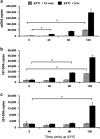Designer antigens for elicitation of broadly neutralizing antibodies against HIV
- PMID: 25505973
- PMCID: PMC4232059
- DOI: 10.1038/cti.2014.22
Designer antigens for elicitation of broadly neutralizing antibodies against HIV
Abstract
Broadly neutralizing antibodies (bNAbs) are a consistent protective immune correlate in human immunodeficiency virus (HIV) patients as well as in passive immunotherapy studies. The inability to elicit bNAbs is the core reason underlining the repeated failures in traditional HIV vaccine research. Rare monoclonal bNAbs against HIV, however, have been produced. The significance of producing and studying more monoclonal bNAbs against HIV is underlined by its capability of defining critical epitopes for antigen designs aimed at the development of a serum-neutralizing HIV vaccine. In this regard, traditional antigen preparations have failed. There is a need to clearly advocate the concept, and systematic study, of more sophisticated 'designer antigens' (DAGs), which carry epitopes that can lead to the elicitation of bNAbs. Using an extremely efficient cell-to-cell HIV infection model for the preparation of HIV prefusion intermediates, we have investigated a novel and systematic approach to produce (not screen for) potential bNAbs against HIV. We have established the concept and the experimental system for producing formaldehyde-fixed HIV DAGs that carry temperature-arrested prefusion intermediates. These prefusion intermediates are structures on the cell surface after viral attachment and receptor engagement but before fully functional viral entry. Using defined HIV prefusion DAGs, we have produced monoclonal antibodies (mAbs) specific to novel epitopes on HIV prefusion intermediates. These mAbs do not react with the static/native surface HIV or cellular antigens, but react with the DAGs. This is a paradigm shift from the current mainstream approach of screening elite patients' bNAbs.
Figures





Similar articles
-
Broadly Neutralizing Antibodies Display Potential for Prevention of HIV-1 Infection of Mucosal Tissue Superior to That of Nonneutralizing Antibodies.J Virol. 2016 Dec 16;91(1):e01762-16. doi: 10.1128/JVI.01762-16. Print 2017 Jan 1. J Virol. 2016. PMID: 27795431 Free PMC article.
-
Development of Broadly Neutralizing Antibodies and Their Mapping by Monomeric gp120 in Human Immunodeficiency Virus Type 1-Infected Humans and Simian-Human Immunodeficiency Virus SHIVSF162P3N-Infected Macaques.J Virol. 2016 Mar 28;90(8):4017-4031. doi: 10.1128/JVI.02898-15. Print 2016 Apr. J Virol. 2016. PMID: 26842476 Free PMC article.
-
Positive Selection at Key Residues in the HIV Envelope Distinguishes Broad and Strain-Specific Plasma Neutralizing Antibodies.J Virol. 2019 Mar 5;93(6):e01685-18. doi: 10.1128/JVI.01685-18. Print 2019 Mar 15. J Virol. 2019. PMID: 30567996 Free PMC article.
-
Development of broadly neutralizing antibodies in HIV-1 infected elite neutralizers.Retrovirology. 2018 Sep 5;15(1):61. doi: 10.1186/s12977-018-0443-0. Retrovirology. 2018. PMID: 30185183 Free PMC article. Review.
-
Broadly Neutralizing Antibodies to HIV and Their Role in Vaccine Design.Annu Rev Immunol. 2016 May 20;34:635-59. doi: 10.1146/annurev-immunol-041015-055515. Annu Rev Immunol. 2016. PMID: 27168247 Free PMC article. Review.
Cited by
-
Adjuvant-enhanced CD4 T Cell Responses are Critical to Durable Vaccine Immunity.EBioMedicine. 2015 Nov 27;3:67-78. doi: 10.1016/j.ebiom.2015.11.041. eCollection 2016 Jan. EBioMedicine. 2015. PMID: 26870818 Free PMC article.
References
-
- Burton DR, Weiss RA. AIDS/HIV. A boost for HIV vaccine design. Science. 2010;329:770–773. - PubMed
-
- McMichael A, Picker LJ, Moore JP, Burton DR. Another HIV vaccine failure: where to next. Nat Med. 2013;19:1576–1577. - PubMed
-
- Virgin HW, Walker BD. Immunology and the elusive AIDS vaccine. Nature. 2010;464:224–231. - PubMed
-
- Mascola JR, Montefiori DC. The role of antibodies in HIV vaccines. Annu Rev Immunol. 2010;28:413–444. - PubMed
LinkOut - more resources
Full Text Sources
Other Literature Sources
